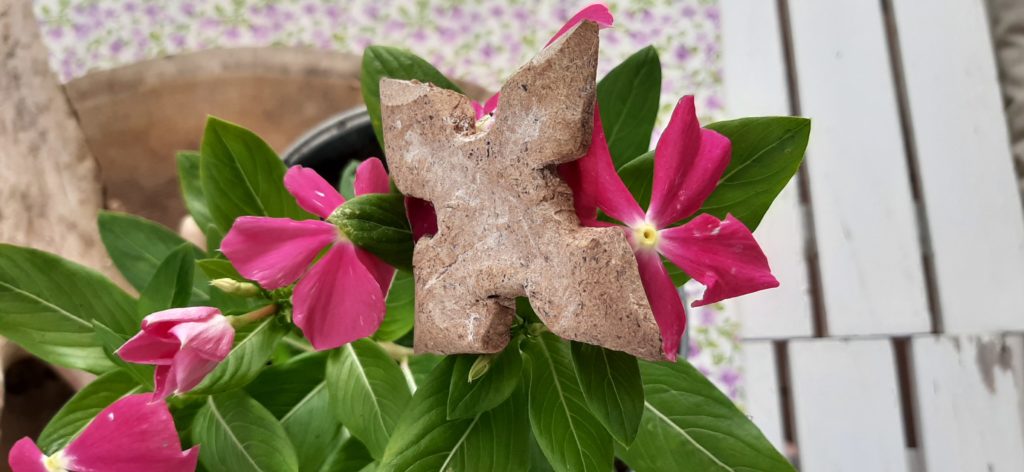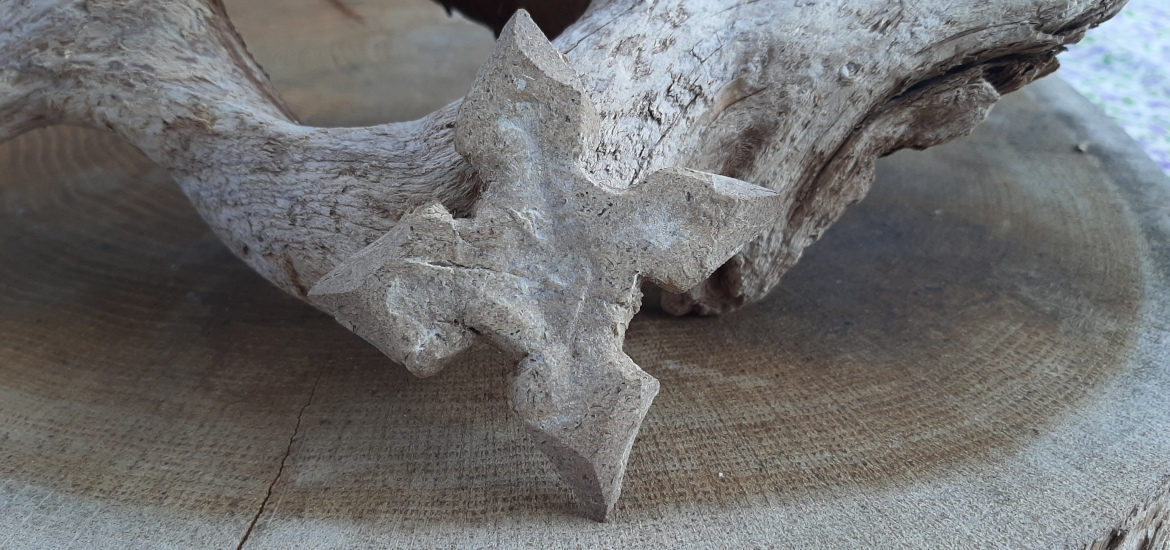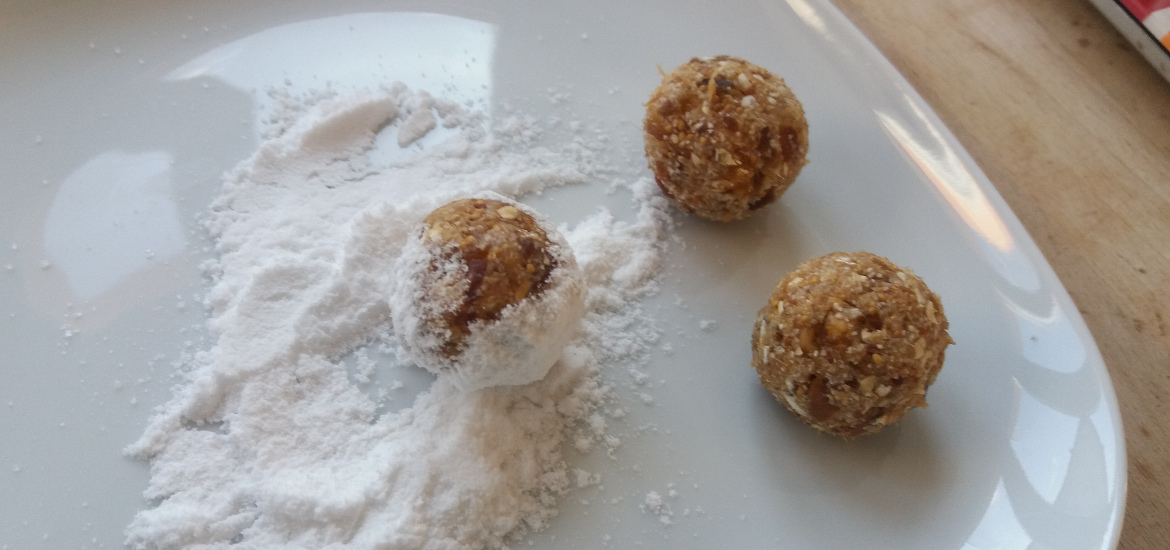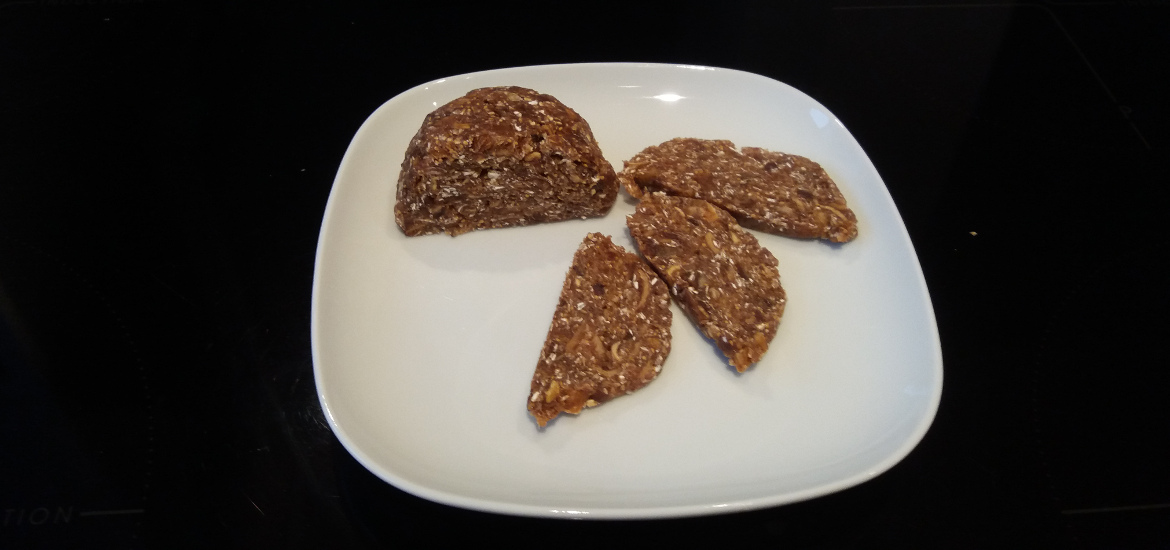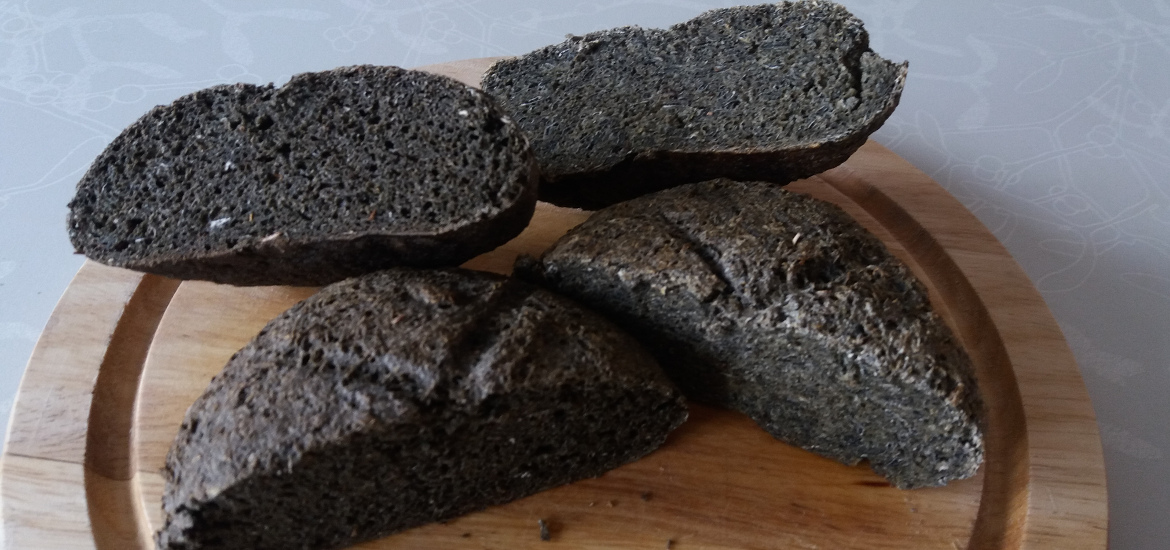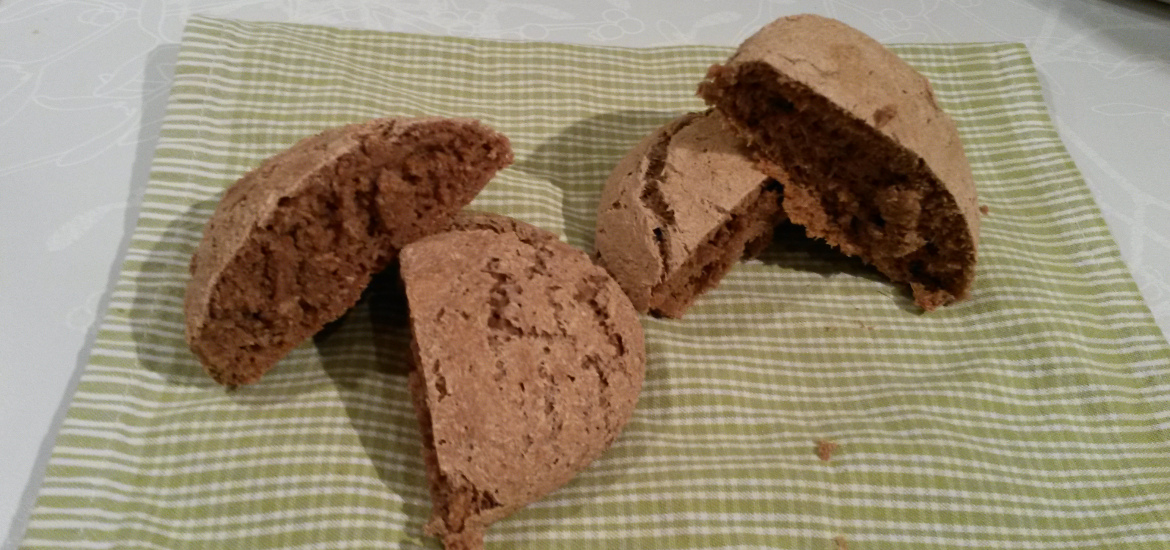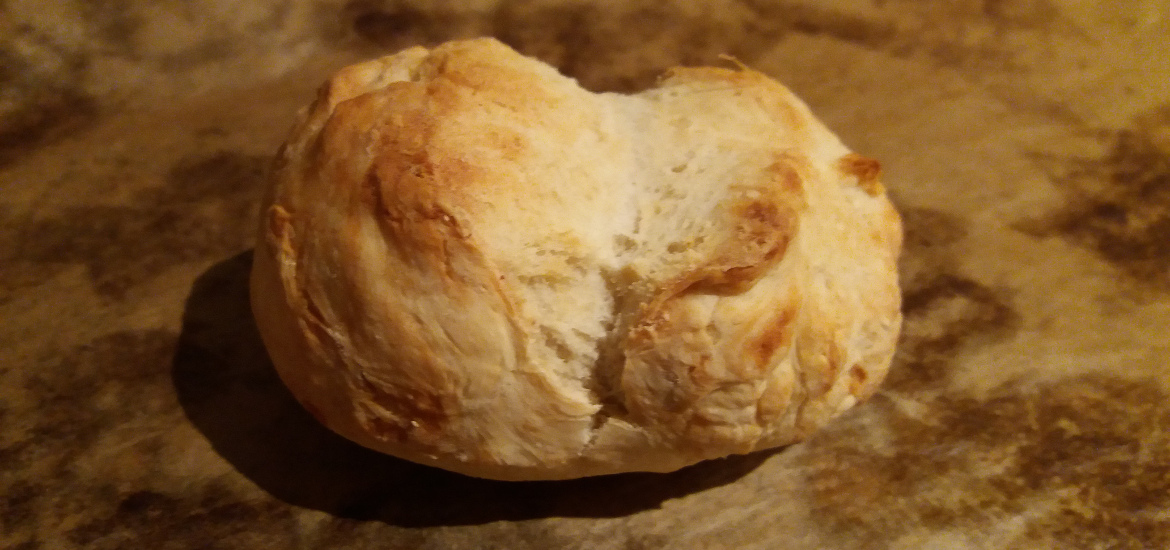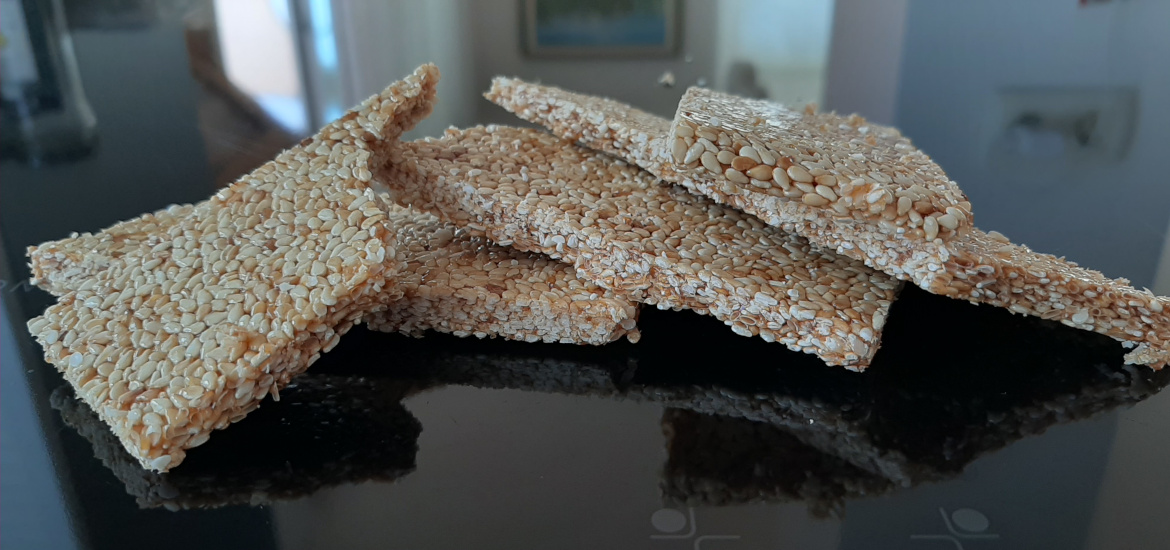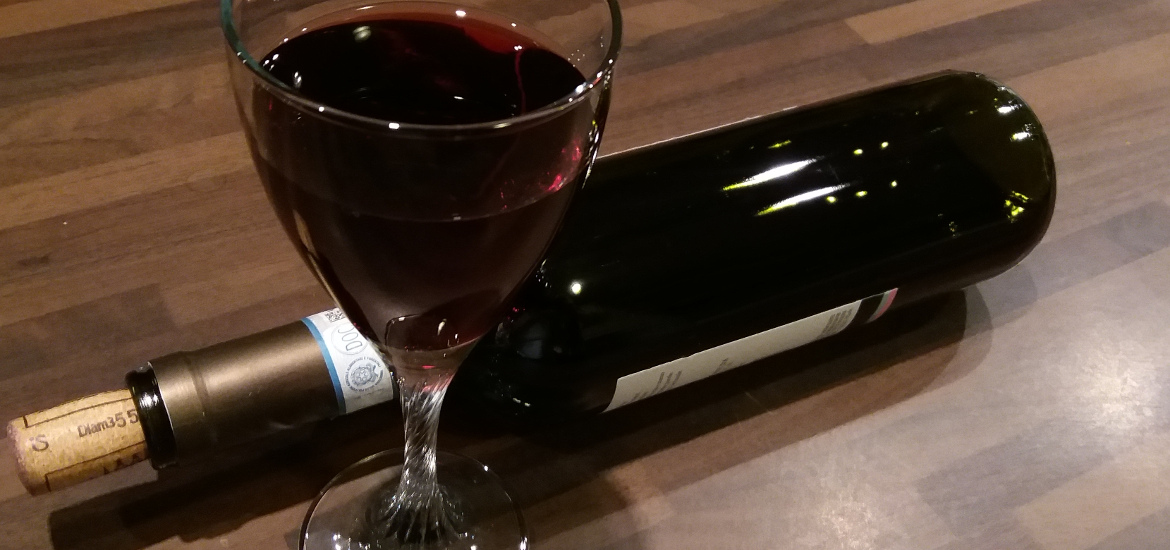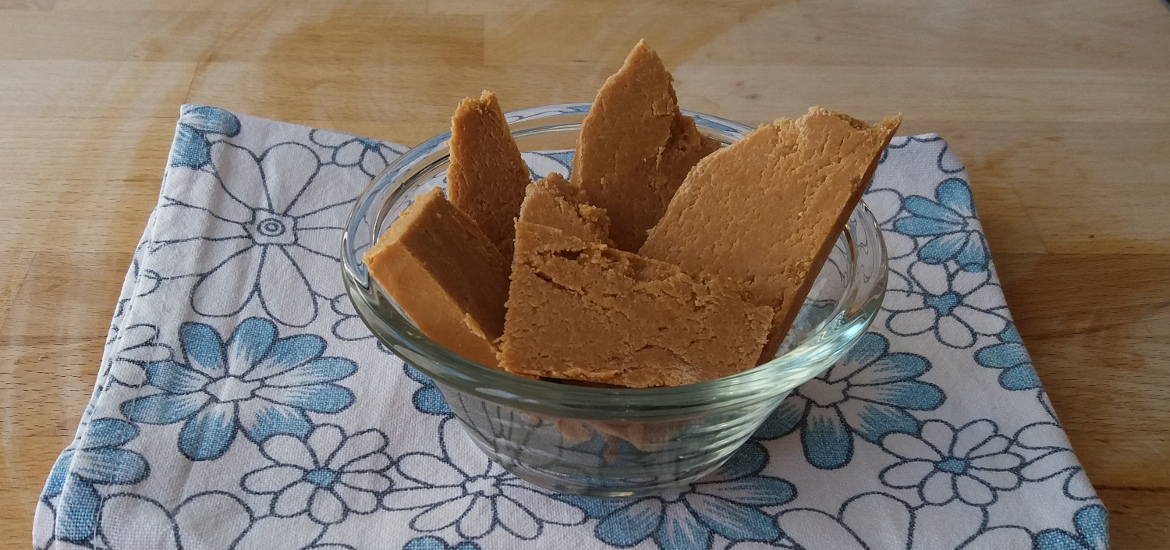Dwarf bread made on Discworld is a funny thing and something definitely worth reproducing in our universe. It can keep you full without you even touching it. As nicely put by mr. Terry: “A traveller can go for miles, just knowing there’s dwarf bread in their pack. A traveller can think of just about anything to eat rather than dwarf bread including their own foot and even pumpkins”. Well, I would not go to extremes, the bread should still be edible for humans and it wont contain gravel (another feature of dwarf bread). But other aspects of dwarven bread, such as “Various forms of dwarf bread can be used as weapons, e.g. battle muffins and drop scones” are really intriguing and should be definitely further explored. Something useful in a battle AND edible in times of need is definitely a must have for all modern adventurers.
When I tried to think of something similar that I was already familiar with, Lembas immediately came to mind. My lembas did turn almost rock hard and could in theory be used in self defence, but the taste was too good to be even remotely similar to Discworld dwarf bread. Additionally Discworld dwarf bread is baked, practically forged in a furnace, which my lembas is not. Some experimenting was therefore definitely required.
Theory of battle bread
Experienced bred bakers assured me that baking a hard bread is really not that difficult. But I think they simply did nor grasp that I need weapons grade bread hardness. Nevertheless, usual bread baking experiences do count, for instance various forms of full corn flavor definitely give harder bread – rye bread is a nice example. Next, yeast is definitely out of the question. Certainly the bread should nor rise and be all fluffy and soft. Further, double baking of bread gives harder bread – exactly what I am looking for and we are also getting closer to furnace forged dwarven bread. Finally some special additives to increase the hardness and toughness of the bread should not be disregarded. Since my lembas did turn rock hard some honey should be tried. Along these lines simple sugar should also be tested, since it could fuse together the flour particles. On the other hand if fibers are needed for resilience, dates – also used in my lembas – sound ideal for the job.
Lastly, the form of the bread also plays an important role. Maybe not in the sustenance and caloric meaning, but if it should be used in battle this is crucial. Long sticks for beating are out of the question. I cannot imagine a bread that is hard and resilient enough. Loaves and buns can be useful to hit in close range or throw as stones, but this is too common. I am aiming for something more refined. A throwing star made of finest dwarven bread sounds much more intriguing and battleworthy.
Battle bread baking
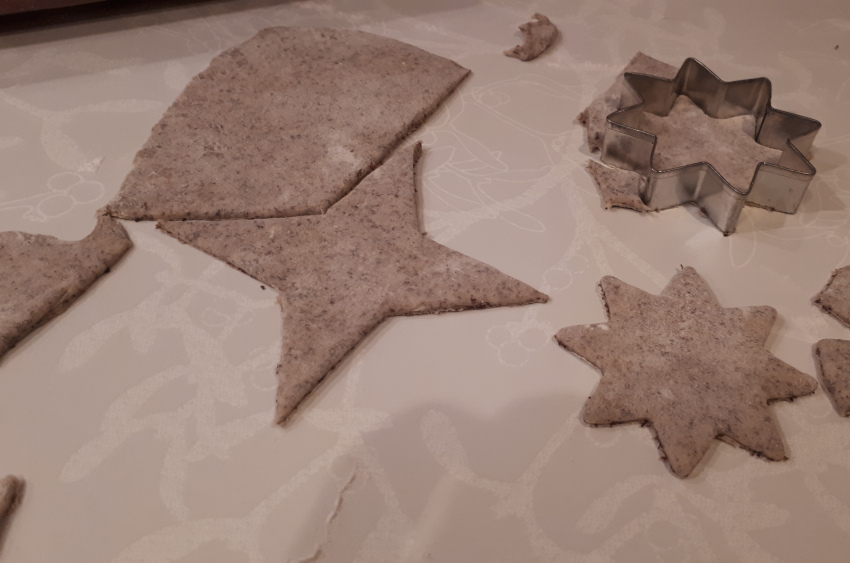
For the basic dough I used a mixture of regular wheat and buckwheat flour, salt and water. After kneading the dough was split in four parts and allowed to rest for 30 minutes. Table sugar, honey and dates were mixed into separate parts – all in 5% ratio to the starting dough. One part of the dough was used as control. The dough was kneaded again to get the sugar, honey and dates in and control was just kneaded without additives. Next the dough was spread around 1 centimeter thick and star shapes were cut out with a cookie model. This proved tricky for the dough with added sugar and honey. These two were really stick and therefore hard to shape. Stars were baked and allowed to cool. They did not look too hard and I was considering baking them again. But in a few days they dried out completely and were hard as stone. The only drawback was that some parts of the stars inflated during the baking, resulting in uneven surfaces. At the first glance, there was not much difference in the hardness between different materials.
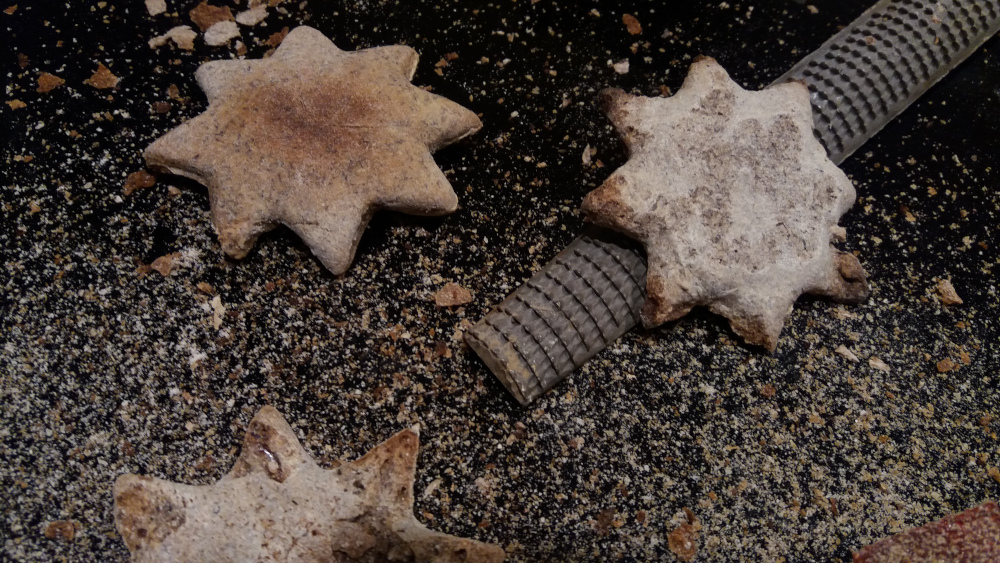
For the final step, the edges of the stars had to be sharpened. First I tried sandpaper and was surprised to learn that this will take ages. The stars were remarkably resilient. I had to use a large wood file to make some progress. Since the file was really rough, I returned to sandpaper for the finishing polish. Sanding machine was used since manually the work proved to be really time consuming and exhausting. Again, no difference could be seen in hardness or resilience between different additives.
I was very displeased with the looks (see pictures), so I decided to do another trial run. Only the basic dough was used, with a pitch of sugar for the taste, not for the hardness. I tried out different shapes, since the basic shape was not ideal for sharpening. First the dough was dred, to prevent air pockets formation during baking. The stars did harden, but not nearly enough. Next the stars were baked at 200 °C for 12 minutes. This already proved to be too much, since the stars nearly turned to black. This left them cracked and brittle, but I tried to sharpen them anyway. The result was unsatisfactory, as expected.
I tried for the third time. Again, only the basic dough was used, with a pitch of sugar for the taste, not for the hardness. Next star shapes were cut from the dough, but this time much thicker. Thicker stars should be easier to bake and more resilient, but not so cool looking. Also the sharpening part could be done with less effort. After 5 minutes at 200 °C the stars looked firm (and deadly) enough. Just check the picture below.
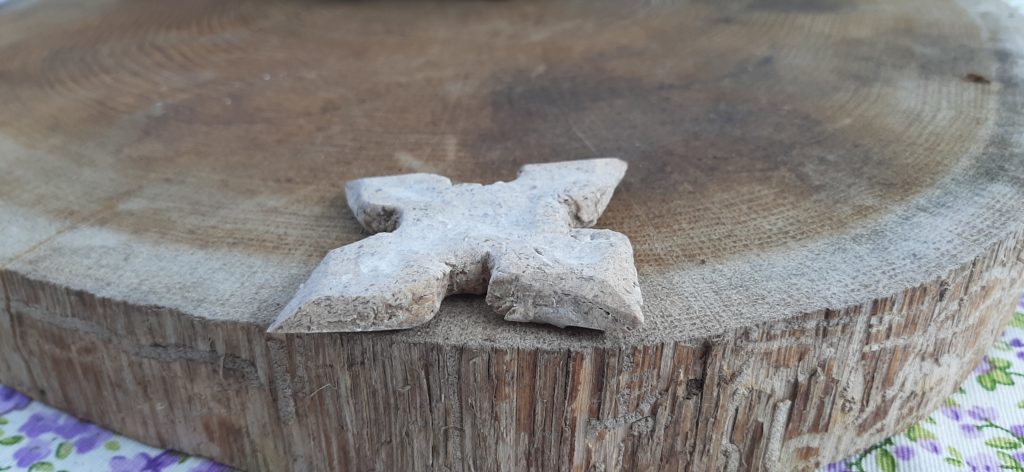
Battle bread tasting
Testing was definitely the best part. The taste was not bad, definitely edible, with a pleasant sugary taste. The taste with other additives (honey, dates) was not much different. The only complaint was that the bread was hard as a rock and you had to soften it in the mouth before starting to chew it.
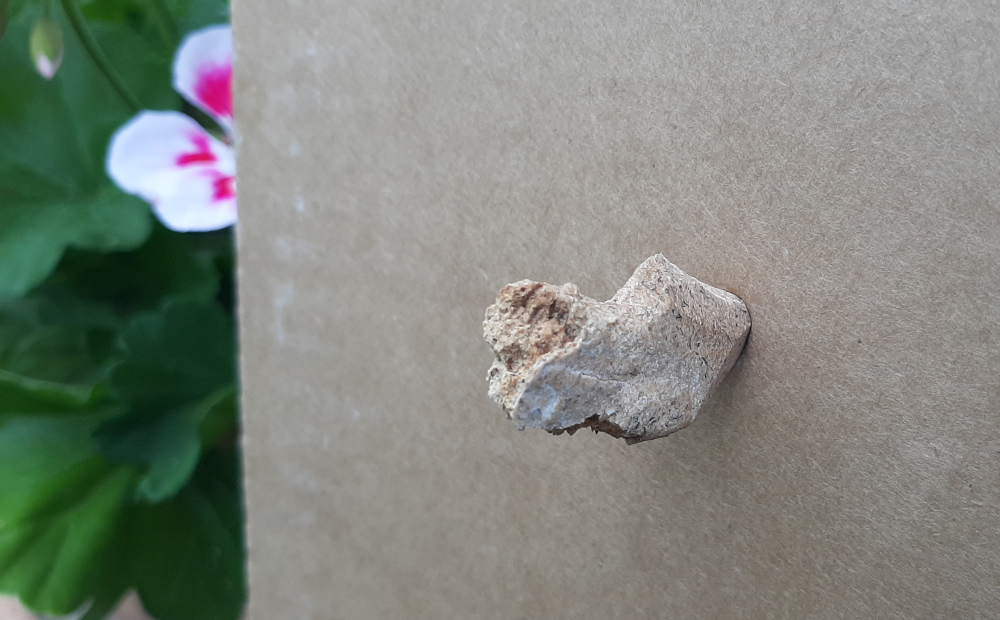
The hardness and resilience of the bread was great. I could not break smaller pieces of the bread. With complete throwing stars it was a bit easier, since I could use some leverage with the longer sides of the stars. But the best part was battle testing of the bread. I was hyper excited, and wanted to test the stars in action. For the lack of better targets, I picked a cardboard box. In theory, the stars should, after throwing, get stuck in the box and make a satisfactory thud. Unfortunately the first star just bounced back from the box and shattered. It seems that my battle bread is for one time use only. I was more lucky with the second star, since it probably had an optimal landing. The star did penetrate the box a bit, but it shattered anyway and only one spear was lodged in the box. For next time, I think even thicker, stronger stars should perform much better. At least they will provide more nourishment, in the event that their combat usefulness will remain the same.
